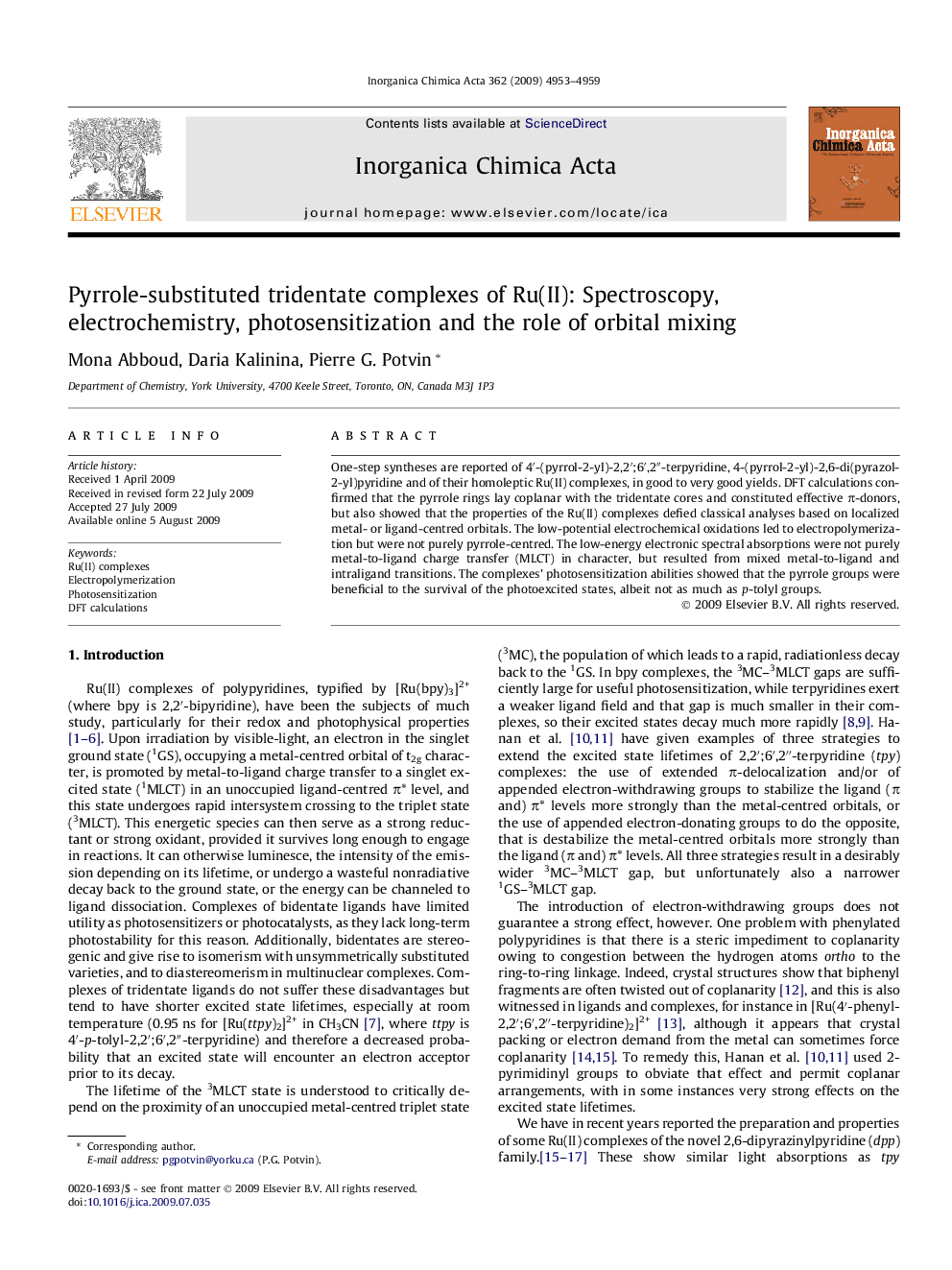| Article ID | Journal | Published Year | Pages | File Type |
|---|---|---|---|---|
| 1309401 | Inorganica Chimica Acta | 2009 | 7 Pages |
One-step syntheses are reported of 4′-(pyrrol-2-yl)-2,2′;6′,2″-terpyridine, 4-(pyrrol-2-yl)-2,6-di(pyrazol-2-yl)pyridine and of their homoleptic Ru(II) complexes, in good to very good yields. DFT calculations confirmed that the pyrrole rings lay coplanar with the tridentate cores and constituted effective π-donors, but also showed that the properties of the Ru(II) complexes defied classical analyses based on localized metal- or ligand-centred orbitals. The low-potential electrochemical oxidations led to electropolymerization but were not purely pyrrole-centred. The low-energy electronic spectral absorptions were not purely metal-to-ligand charge transfer (MLCT) in character, but resulted from mixed metal-to-ligand and intraligand transitions. The complexes’ photosensitization abilities showed that the pyrrole groups were beneficial to the survival of the photoexcited states, albeit not as much as p-tolyl groups.
Graphical abstractThe Ru(II) complexes of pyrrole-substituted terpyridine and 2,6-dipyrazinylpyridine ligands were prepared and studied. According to DFT calculations, these show extensive orbital mixing and their spectroscopic, electrochemical and photophysical properties are not amenable to the usual analyses based on metal- or ligand-centred orbitals.Figure optionsDownload full-size imageDownload as PowerPoint slide
